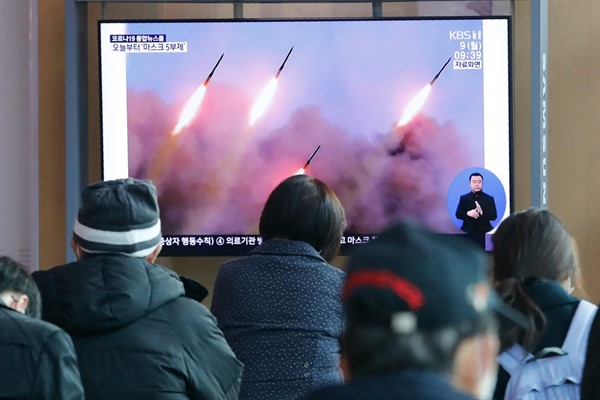When North Korean leader Kim Jong Un mysteriously disappeared from public view for three weeks last month, triggering widespread rumors about his health, many international observers speculated about what could come next. His possible demise might lead to a contested succession that sparked domestic instability and the proliferation of North Korea’s stockpiles of nuclear weapons and fissile material. Kim’s reemergence on May 2, at the opening of a fertilizer plant in the city of Sunchon, has taken succession concerns off the table for now. But it is time to worry once again about North Korea’s development of its nuclear and ballistic missile programs under Kim’s continued rule.
During a marathon New Year’s Eve speech at the fifth party plenum of the Central Committee of the Workers’ Party of Korea last December, Kim threatened to unveil a “new strategic weapon” and floated the possibility of returning to tests of long-range ballistic missiles, which Pyongyang has refrained from since November 2017. His aggressive speech marked a deadline that Kim had set in April 2019 for the U.S. to agree to substantial concessions in its negotiations with North Korea, primarily the lifting of economic sanctions.
But a single day of working-level talks in Stockholm last October broke down without any progress. In November, Deputy Secretary of State Steven Biegun, who was then serving as the Trump administration’s special envoy for negotiations with North Korea, publicly called Kim’s end-of-year deadline an “artificial” one that the North Koreans had “set upon themselves.” He invited Pyongyang to return to negotiations.

